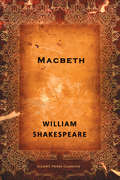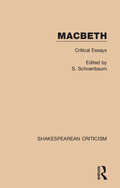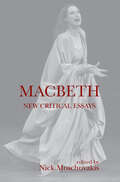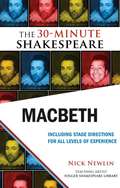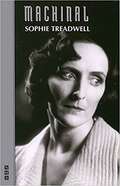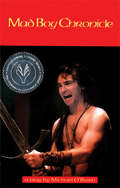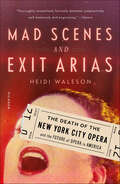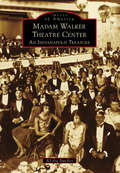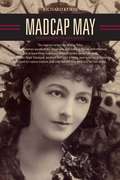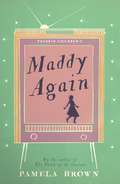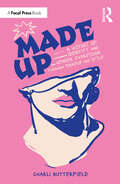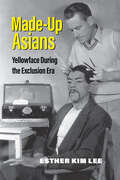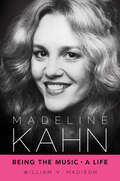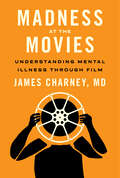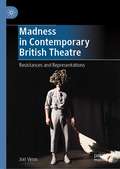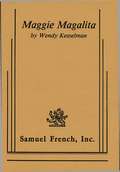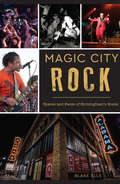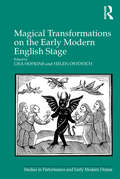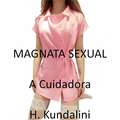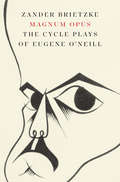- Table View
- List View
Macbeth: A Tragedy
by William ShakespeareMacbeth dramatises the damaging physical and psychological effects of political ambition on those who seek power for its own sake. A brave Scottish general named Macbeth receives a prophecy from a trio of witches that one day he will become King of Scotland. Consumed by ambition and spurred to action by his wife, Macbeth murders King Duncan and takes the Scottish throne for himself. He is then wracked with guilt and paranoia. Forced to commit more and more murders to protect himself from enmity and suspicion, he soon becomes a tyrannical ruler. The bloodbath and consequent civil war swiftly take Macbeth and Lady Macbeth into the realms of madness and death.
Macbeth: Critical Essays (Shakespearean Criticism)
by S. SchoenbaumOriginally published in 1991. Collecting together commentary and critique on ‘the Scottish play’, this book showcases varied discussions of the text and the theatrical productions. From Samuel Johnson’s brief 1765 comment to the editor’s own piece on the Porter’s scene, the texts included here are popular important accounts of thoughts and scholarship on the play over the years. Some pieces address the most famous early Lady Macbeth – Mrs Siddons, while others look at a theme or specific issue such as Lady Macbeth’s children. This is a great sample of the voluminous body of work looking at the tragedy, considering its images, symbols, meanings and its challenges for the stage.
Macbeth: Modern English Version Side-by-side With Full Original Text (Shakespeare Made Easy)
by William ShakespeareHere are the books that help teach Shakespeare plays without the teacher constantly needing to explain and define Elizabethan terms, slang, and other ways of expression that are different from our own. Each play is presented with Shakespeare's original lines on each left-hand page, and a modern, easy-to-understand "translation" on the facing right-hand page. All dramas are complete, with every original Shakespearian line, and a full-length modern rendition of the text. Helpful background information that puts each play in its historical perspective. Discussion questions that teachers can use to spark student class participation, and which students can use as springboards for their own themes and term papers. Fact quizzes, sample examinations, and other features that improve student comprehension of what each play is about.
Macbeth: New Critical Essays (Shakespeare Criticism)
by Nick MoschovakisThis volume offers a wealth of critical analysis, supported with ample historical and bibliographical information about one of Shakespeare’s most enduringly popular and globally influential plays. Its eighteen new chapters represent a broad spectrum of current scholarly and interpretive approaches, from historicist criticism to performance theory to cultural studies. A substantial section addresses early modern themes, with attention to the protagonists and the discourses of politics, class, gender, the emotions, and the economy, along with discussions of significant ‘minor’ characters and less commonly examined textual passages. Further chapters scrutinize Macbeth’s performance, adaptation and transformation across several media—stage, film, text, and hypertext—in cultural settings ranging from early nineteenth-century England to late twentieth-century China. The editor’s extensive introduction surveys critical, theatrical, and cinematic interpretations from the late seventeenth century to the beginning of the twenty-first, while advancing a synthetic argument to explain the shifting relationship between two conflicting strains in the tragedy’s reception. Written to a level that will be both accessible to advanced undergraduates and, at the same time, useful to post-graduates and specialists in the field, this book will greatly enhance any study of Macbeth. Contributors: Rebecca Lemon, Jonathan Baldo, Rebecca Ann Bach, Julie Barmazel, Abraham Stoll, Lois Feuer, Stephen Deng, Lisa Tomaszewski, Lynne Bruckner, Michael David Fox, James Wells, Laura Engel, Stephen Buhler, Bi-qi Beatrice Lei, Kim Fedderson and J. Michael Richardson, Bruno Lessard, Pamela Mason.
Macbeth: The 30-Minute Shakespeare
by Nick NewlinPlanning a school or amateur Shakespeare production? The best way to experience the plays is to perform them, but getting started can be a challenge: The complete plays are too long and complex, while scene selections or simplified language are too limited."The 30-Minute Shakespeare" is a new series of abridgements that tell the "story" of each play from start to finish while keeping the beauty of Shakespeare's language intact. Specific stage directions and character suggestions give even inexperienced actors the tools to perform Shakespeare with confidence, understanding, and fun!This cutting of MACBETH is edited to seven key scenes, opening with the Weird Sisters predicting Macbeth's fate. Also included are Macbeth and his villainous wife plotting to murder King Duncan, the appearance of Banquo's ghost at the banquet, the Witches' unforgettable "double double toil and trouble" scene, and Lady Macbeth's riveting "out, damned spot" sleepwalk. In the finale, the entire cast recites Macbeth's poignant "tomorrow, tomorrow, and tomorrow" speech in unison.The edition also includes an essay by editor Nick Newlin on how to produce a Shakespeare play with novice actors, and notes about the original production of this abridgement at the Folger Shakespeare Library's annual Student Shakespeare Festival.
Machinal (Royal National Theatre)
by Sophie TreadwellA major rediscovery of a forgotten woman playwright of the twenties, Machinal is a powerful expressionist play about the status of women in an increasingly mechanized society, and the torture of a loveless marriage.
Mad Boy Chronicle
by Michael O'Brien Liz NichollsSet in the final days of the first millennium, Mad Boy Chronicle hauls the Hamlet story howling back to its origins. Join the Mad Boy as he sets out in fierce pursuit of his destiny, in a world where wolves, elves, spirits, and Jesus Christ all compete for the future of humanity.
Mad Scenes and Exit Arias: The Death of the New York City Opera and the Future of Opera in America
by Heidi WalesonFrom the Wall Street Journal’s opera critic, a history of how and why the New York City Opera went bankrupt—and what it means for the future of the arts.In October 2013, the arts world was rocked by the news that the New York City Opera—“the people’s opera”—had finally succumbed to financial hardship after 70 years in operation. The company had been a fixture on the national opera scene—as the populist antithesis of the grand Metropolitan Opera, a nurturing home for young American talent, and a place where new, lively ideas shook up a venerable art form. But NYCO’s demise represented more than the loss of a cherished organization: it was a harbinger of massive upheaval in the performing arts—and a warning about how cultural institutions would need to change in order to survive.Drawing on extensive research and reporting, Heidi Waleson, one of the foremost American opera critics, recounts the history of this scrappy company and reveals how, from the beginning, it precariously balanced an ambitious artistic program on fragile financial supports. Waleson also looks forward and considers some better-managed, more visionary opera companies that have taken City Opera’s lessons to heart.Above all, Mad Scenes and Exit Arias is a story of money, ego, changes in institutional identity, competing forces of populism and elitism, and the ongoing debate about the role of the arts in society. It serves as a detailed case study not only for an American arts organization, but also for the sustainability and management of nonprofit organizations across the country.“An intricate whodunit that seeks to find out who murdered the New York City Opera. . . . Waleson gives us a vivid description of each death-defying crisis and a sharp portrait of the ever-changing cast of would-be saviors who somehow always failed in their mission.” —The New York Times Book Review“Thoroughly researched, factually detailed, judgmentally well-balanced, and engrossing.” —Opera“Waleson’s in-depth study illustrates the challenges City Opera—and other opera houses—face in the 21st century as they seek to preserve tradition and innovate.” —Publishers Weekly“A thorough recounting of the tumultuous history of the New York City Opera [and] a cleareyed examination of the economic fragility of cultural institutions.” —Kirkus Reviews
Madame Walker Theatre Center: An Indianapolis Treasure (Images of America)
by A'Lelia BundlesAs they watched construction of the block-long flatiron building brick by brick throughout 1927, African American residents of Indianapolis could scarcely contain their pride. This new headquarters of the Madam C.J. Walker Manufacturing Company, with its terra-cotta trimmed facade, was to be more than corporate offices and a factory for what then was one of America's most successful black businesses. In fact, it was designed as "a city within a city," with an African Art Deco theater, ballroom, restaurant, drugstore, beauty salon, beauty school, and medical offices. Generations of African American families met for Sunday dinner at the Coffee Pot, enjoyed first-run movies and live performances in the Walker Theatre, and hosted dances in the Casino. Today, this National Historic Landmark is an arts center anchoring the Indiana Avenue Cultural District.
Madcap May: Mistress of Myth, Men, and Hope
by Richard KurinMay Yohe was a popular entertainer from humble American origins who married and then abandoned a wealthy English Lord who owned the fabled Hope diamond--one of the most valuable objects in the world and now exhibited at the Smithsonian Institution in Washington, D.C. May was a romantic who had numerous lovers and at least three husbands--though the tabloids rumored twelve. One included the playboy son of the Mayor of New York. May separated from him--twice--and cared for her next husband, a South African war hero and invalid whom she later shot.Crossing the paths of Ethel Barrymore, Boris Karloff, Oscar Hammerstein, Teddy Roosevelt, Consuelo Vanderbilt, and the Prince of Wales, May Yohe was a foul-mouthed, sweet-voiced showgirl who drew both the praise and rebuke of Nobel laureate George Bernard Shaw. Nicknamed "Madcap May," she was a favorite of the press. In later years she faced several maternity claims and a law suit which she won. She was hospitalized in an insane asylum and escaped. She ran a rubber plantation in Singapore, a hotel in New Hampshire, and a chicken farm in Los Angeles. When all else failed, she washed floors in a Seattle shipyard, and during the Depression held a job as a government clerk. Shortly before her death, she fought, successfully, to regain her lost U.S. citizenship.How was this woman, May Yohe, able to charm her way to international repute, live an impossible life, and also find the strength to persevere in light of the losses she suffered--in wealth, citizenship, love, and sanity? Madcap May, assembled from her writings and historical interviews, archival records, newspaper stories, scrapbooks, photographs, playbills, theatrical reviews, souvenirs, and silent film, tells her heretofore lost story.
Maddy Again: Blue Door 5 (Blue Door #5)
by Pamela BrownThe fifth and final book in the Blue Door series, which starts with The Swish of the Curtain, the classic story which inspired actors from Maggie Smith to Eileen Atkins.Maddy got up and did her Junior Miss speech, trying not to overdo the comedy. Her American accent was hideous, and very funny, and all the class began to giggle.The whole class clapped when she had finished, and Mr Manyweather roared with laughter.'What a little horror!' he cried. 'I've never seen anything so nauseating, but excellent!'Maddy is on her own again at the Actors' Guild in London, while the others work at the Blue Door Theatre. But she's not entirely alone: she has a new roommate, a new chaperone and an inspiring new teacher, Mr Manyweather, brought in to introduce students to the very different world of television.With these friends, can Maddy survive her first taste of failure - or is she embarking on her greatest acting adventure yet?
Maddy Alone: Blue Door 2 (Blue Door #2)
by Pamela BrownThe second book in the Blue Door series, following on from The Swish of the Curtain, the classic story which inspired actors from Maggie Smith to Eileen AtkinsWith the rest of the Blue Door Theatre Company in London training to be actors, poor Maddy has been left all alone in the little town of Fenchester. She longs to follow the others to the big city, but she is 12 years old, and she has maths homework to do.However, Maddy has never let a bit of schoolwork come between her and her dreams. When she finds that a famous Dutch film director is in town, she leaps at the opportunity: she will be a film star. But stardom isn't an easy life (in spite of the personal dressing room and the lovely costumes) and there are setbacks and difficulties along the way. But with such a stubborn and talented leading lady as Maddy, surely even Mrs Potter-Smith and the headmistress can't stop the show from going on?Maddy Alone is the second book in the Blue Door series, following on from the classic of children's literature The Swish of the Curtain.
Made Up: A History of Identity and Gender Expression Through Makeup and Style
by Charli ButterfieldThis book explores historical and modern uses of makeup for self-expression, with a focus on gender.The book begins by exploring the historical influences in the origins and development of makeup across genders, providing a whistle-stop tour of gendered adornment through time. The chapters that follow explore more specific topics that provide context for a range of influences on self-expression: Sex, gender and identity, including introductory gender theory and terminology relevant to the topic. Restrictions and resistance faced by the queer community regarding expression, with a historical look at pioneers of the movement. Gendered cosmetic advertisements through time. Subcultures and coded expression. Beauty and identity in the digital age. The impact of global ideals on the cosmetics market, with a focus on South Korea, exploring historical and modern influences and trends. The book can be explored in a sequential or non-sequential order, as each chapter provides a standalone approach to a topic and concludes with questions to encourage further contemplation and research.This book is written for anyone interested in the history of makeup as a vehicle for self-expression, and how gender comes into play; students and teachers of Theatrical makeup and Fashion courses, makeup artists, makeup enthusiasts, and those curious to discover what Ancient Egyptians and emos may have in common (spoiler: it’s not snakebites).
Made-Up Asians: Yellowface During the Exclusion Era
by Esther Kim LeeMade-Up Asians traces the history of yellowface, the theatrical convention of non-Asian actors putting on makeup and costume to look East Asian. Using specific case studies from European and U.S. theater, race science, and early film, Esther Kim Lee traces the development of yellowface in the U.S. context during the Exclusion Era (1862–1940), when Asians faced legal and cultural exclusion from immigration and citizenship. These caricatured, distorted, and misrepresented versions of Asians took the place of excluded Asians on theatrical stages and cinema screens. The book examines a wide-ranging set of primary sources, including makeup guidebooks, play catalogs, advertisements, biographies, and backstage anecdotes, providing new ways of understanding and categorizing yellowface as theatrical practice and historical subject. Made-Up Asians also shows how lingering effects of Asian exclusionary laws can still be seen in yellowface performances, casting practices, and anti-Asian violence into the 21st century.
Madeline Kahn: Being the Music, A Life (Hollywood Legends Series)
by William V. MadisonBest known for her Oscar-nominated roles in the smash hits Paper Moon and Blazing Saddles, Madeline Kahn (1942–1999) was one of the most popular comedians of her time—and one of the least understood. In private, she was as reserved and refined as her characters were bold and bawdy. Almost a Method actor in her approach, she took her work seriously. When crew members and audiences laughed, she asked why—as if they were laughing at her—and all her life she remained unsure of her gifts. William V. Madison examines Kahn's film career, including not only her triumphs with Mel Brooks and Peter Bogdanovich, but also her overlooked performances in The Adventure of Sherlock Holmes' Smarter Brother and Judy Berlin, her final film. Her work in television—notably her sitcoms—also comes into focus. New York theater showered her with accolades, but also with remarkably bad luck, culminating in a disastrous outing in On the Twentieth Century that wrecked her reputation on Broadway. Only with her Tony-winning performance in The Sisters Rosensweig, fifteen years later, did Kahn regain her standing. Drawing on new interviews with family, friends, and such colleagues as Lily Tomlin, Carol Burnett, Gene Wilder, Harold Prince, and Eileen Brennan, as well as archival press and private writings, Madison uncovers Kahn's lonely childhood and her struggles as a single woman working to provide for her erratic mother. Above all, Madison reveals the paramount importance of music in Kahn's life. A talented singer, she entertained offers for operatic engagements long after she was an established Hollywood star, and she treated each script as a score. As Kahn told one friend, her ambition was “to be the music.”
Madness at the Movies: Understanding Mental Illness through Film
by James CharneyA unique exploration of how mental illness is portrayed in classic and contemporary films.The study of classic and contemporary films can provide a powerful avenue to understand the experience of mental illness. In Madness at the Movies, James Charney, MD, a practicing psychiatrist and long-time cinephile, examines films that delve deeply into characters' inner worlds, and he analyzes moments that help define their particular mental illness. Based on the highly popular course that Charney taught at Yale University and the American University of Rome, Madness at the Movies introduces readers to films that may be new to them and encourages them to view these films in an entirely new way. Through films such as Psycho, Taxi Driver, Through a Glass Darkly, Night of the Hunter, A Woman Under the Influence, Ordinary People, and As Good As It Gets, Charney covers an array of disorders, including psychosis, paranoia, psychopathy, depression, bipolar disorder, obsessive-compulsive disorder, and anxiety. He examines how these films work to convey the essence of each illness. He also looks at how each film reflects the understanding of mental illness at the time it was released as well as the culture that shaped that understanding.Charney explains how to observe the behaviors displayed by characters in the films, paying close attention to signs of mental illness. He demonstrates that learning to read a film can be as absorbing as watching one. By viewing these films through the lens of mental health, readers can hone their observational skills and learn to assess the accuracy of depictions of mental illness in popular media.
Madness in Contemporary British Theatre: Resistances and Representations
by Jon VennThis book considers the representation of madness in contemporary British theatre, examining the rich relationship between performance and mental health, and questioning how theatre can potentially challenge dominant understandings of mental health. Carefully, it suggests what it means to represent madness in theatre, and the avenues through which such representations can become radical, whereby theatre can act as a site of resistance. Engaging with the heterogeneity of madness, each chapter covers different attributes and logics, including: the constitution and institutional structures of the contemporary asylum; the cultural idioms behind hallucination; the means by which suicide is apprehended and approached; how testimony of the mad person is interpreted and encountered. As a study that interrogates a wide range of British theatre across the past 30 years, and includes a theoretical interrogation of the politics of madness, this is a crucial work for any student or researcher, across disciplines, considering the politics of madness and its relationship to performance.
Madness, Art, and Society: Beyond Illness
by Anna HarpinHow is madness experienced, treated, and represented? How might art think around – and beyond – psychiatric definitions of illness and wellbeing? Madness, Art, and Society engages with artistic practices from theatre and live art to graphic fiction, charting a multiplicity of ways of thinking critically with, rather than about, non-normative psychological experience. It is organised into two parts: ‘Structures: psychiatrists, institutions, treatments’, illuminates the environments, figures and primary models of psychiatric care, reconsidering their history and contemporary manifestations through case studies including David Edgar’s Mary Barnes and Milos Forman’s One Flew Over the Cuckoo’s Nest. ‘Experiences: realities, bodies, moods’, promblematises diagnostic categories and proposes more radically open models of thinking in relation to experiences of madness, touching upon works such as Richard Kelly’s Donnie Darko and Duncan Macmillan’s People, Places, and Things. Reading its case studies as a counter-discourse to orthodox psychiatry, Madness, Art, and Society seeks a more nuanced understanding of the plurality of madness in society, and in so doing, offers an outstanding resource for students and scholars alike.
Maggie Magalita
by Wendy KesselmanFull length, drama / 3 f (1 teenager), 1m (teenager), various voices / Interior / A 14 year old Hispanic immigrant who lives with her working mother in a New York City studio apartment, Maggie is trying hard to blend into the American lifestyle and she's succeeding. But she's also forgetting the beauty and pride of her heritage. Now that she has an American boyfriend, she wants to have even less to do with her native culture. Grandmother comes from the old country and upsets Maggie's plans: she can't speak English, can't dress American, can't cook American. She just can't blend! When Maggie's American boyfriend comes over for what turns out to be a very non American dinner, Maggie begins to understand something very precious: herself. This winner of the Sharfman Competition at Kennedy Center is perfect for high school productions.
Magic City Rock: Spaces and Faces of Birmingham’s Scene
by Blake EllsBirmingham's rock music scene has thrived on camaraderie and collaboration for decades. With no competitiveness, it has maintained a punk rock ethos while also appealing to a mainstream audience, thanks to DIY clubs and alternative radio support. Once one of the country's most successful AAA radio stations, 107.7 The X and the A&R power of station head Scott Register provided the early radio success that helped break Train, Matchbox Twenty and John Mayer. The same scene produced Jim Bob & the Leisure Suits, the Primitons, the Sugar La Las and Verbena. From local legends like Hotel and Telluride to national sensation St. Paul and the Broken Bones, writer Blake Ells tells the story of the Magic City's indelible stamp on the history of modern rock.
Magical Epistemologies: Forms of Knowledge in Early Modern English Drama
by Anannya DasguptaThis book began with a simple question: when readers such as us encounter the term magic or figures of magicians in early modern texts, dramatic or otherwise, how do we read them? In the twenty-first century we have recourse to an array of genres and vocabulary from magical realism to fantasy fiction that does not, however, work to read a historical figure like John Dee or a fictional one he inspired in Shakespeare's Prospero. Between longings to transcend human limitation and the actual work of producing, translating, and organizing knowledge, figures such as Dee invite us to re-examine our ways of reading magic only as metaphor. If not metaphor then what else? As we parse the term magic, it reveals a rich context of use that connects various aspects of social, cultural, religious, economic, legal and medical lives of the early moderns. Magic makes its presence felt not only as a forms of knowledge but in methods of knowing in the Renaissance. The arc of dramatists and texts that this book draws between Doctor Faustus, The Tempest, The Alchemist and Comus: A Masque at Ludlow Castle offers a sustained examination of the epistemologies of magic in the context of early modern knowledge formation. Please note: Taylor & Francis does not sell or distribute the Hardback in India, Pakistan, Nepal, Bhutan, Bangladesh and Sri Lanka.
Magical Imaginations
by Genevieve GuentherIn the English Renaissance, poetry was imagined to inspire moral behaviour in its readers, but the efficacy of poetry was also linked to 'conjuration,' the theologically dangerous practice of invoking spirits with words. Magical Imaginations explores how major writers of the period ? including Spenser, Marlowe, and Shakespeare ? negotiated this troubling link between poetry and magic in their attempts to transform readers and audiences with the power of art. Through analyses of texts ranging from sermons and theological treatises to medical tracts and legal documents, Genevieve Guenther sheds new light on magic as a cultural practice in early modern England. She demonstrates that magic was a highly pragmatic, even cynical endeavor infiltrating unexpected spheres ? including Elizabethan taxation policy and Jacobean political philosophy. With this new understanding of early modern magic, and a fresh context for compelling readings of classic literary works, Magical Imaginations reveals the central importance of magic to English literary history.
Magical Transformations on the Early Modern English Stage (Studies in Performance and Early Modern Drama)
by Lisa Hopkins Helen OstovichMagical Transformations on the Early Modern Stage furthers the debate about the cultural work performed by representations of magic on the early modern English stage. It considers the ways in which performances of magic reflect and feed into a sense of national identity, both in the form of magic contests and in its recurrent linkage to national defence; the extent to which magic can trope other concerns, and what these might be; and how magic is staged and what the representational strategies and techniques might mean. The essays range widely over both canonical plays-Macbeth, The Tempest, The Winter’s Tale, The Merry Wives of Windsor, Doctor Faustus, Bartholomew Fair-and notably less canonical ones such as The Birth of Merlin, Fedele and Fortunio, The Merry Devil of Edmonton, The Devil is an Ass, The Late Lancashire Witches and The Witch of Edmonton, putting the two groups into dialogue with each other and also exploring ways in which they can be profitably related to contemporary cases or accusations of witchcraft. Attending to the representational strategies and self-conscious intertextuality of the plays as well as to their treatment of their subject matter, the essays reveal the plays they discuss as actively intervening in contemporary debates about witchcraft and magic in ways which themselves effect transformation rather than simply discussing it. At the heart of all the essays lies an interest in the transformative power of magic, but collectively they show that the idea of transformation applies not only to the objects or even to the subjects of magic, but that the plays themselves can be seen as working to bring about change in the ways that they challenge contemporary assumptions and stereotypes.
Magnata Sexual - A Cuidadora
by N. KundaliniMagnata Sexual A Cuidadora por N. Kundalini O Relatório da Cuidadora A cuidadora de Joanna conta sua experiência Após a morte de Joanna, seu livro foi publicado como ela desejava. Isso incentivou outros a divulgar suas histórias.
Magnum Opus: The Cycle Plays of Eugene O'Neill
by Zander BrietzkeAn original and provocative analysis of Eugene O'Neill's unfinished cycle play project From 1935 to 1939, Eugene O&’Neill worked on a series of plays that would trace the history of an American family through several generations. He completed just two of the proposed eleven plays—A Touch of the Poet and More Stately Mansions—which Zander Brietzke argues represent the core of the entire cycle. Combining archival research, literary analysis, and theatrical imagination, Magnum Opus invites an audience to see this unusual and exciting epic as a historical drama of our time.
